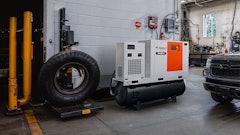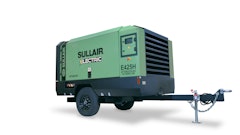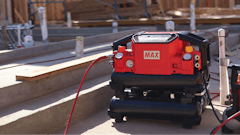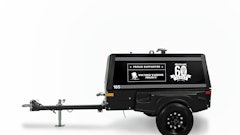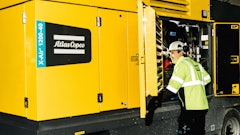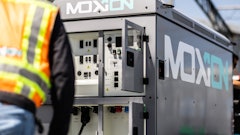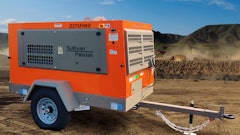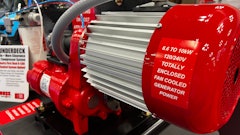
Long ago, in a rental industry of a past generation, there lived two species of air compressor, the single-tool and the two-tool model. Since then, the single-tool machine has become nearly extinct, but thanks to changing market conditions, there’s some evidence that a revival could lead to a full repopulation of the single-tool compressor in rental inventories everywhere.
“20-plus years ago, single-tool compressors were rated at around 100 CFM and two-tool compressors were rated at around 185 CFM,” explains Eric Massinon, business development director at Chicago Pneumatic Power Technique. “These size ratings were based on the typical air consumption from the 90-pound pavement breaker (each tool uses an average of 85 CFM). Single-tool compressors and two-tool compressors is how the rental industry referred to the different sizes.”
But the industry changed when the price of single-tool compressors became comparable to the price of two-tool compressors. From that point on, the industry shifted to a 185-CFM compressor. This shift has remained for over 20 years because the average price difference was less than $1,000, and there were no operational issues in using a single tool with a two-tool compressor.
“Now, over 20-plus years later, the price difference is closer to an average of $5,000 and rental companies and contractors are evaluating much more carefully what they really need for air consumption on the job,” Massinon says, adding, “There is currently a push for creating a single-tool compressor market once again.”
The Tier 4 Final effect
Chance Chartters, sales manager – Mobilair for Kaeser Compressors, says they have seen the market for the 90- to 100-cfm compressor grow in a couple of ways - both with more interest from rental houses and more compressor manufacturers introducing models in this size range.
“Not only are these smaller units less expensive initially, but they are less expensive to maintain as well as easier to operate than the larger 185-cfm and 210-cfm units,” he says. “The smaller horsepower engines have less exhaust emissions and therefore require less emission treatment.”
He continues, “The price difference between the one-tool 90- to 100-cfm compressors and the 185- to 210-cfm compressors is certainly much greater now with the transition to Tier 4 Final. In the past, the price difference was such that it didn’t make much sense to pay almost the same price for a compressor that was half the size. Now, the 90- to 100-cfm compressors can be as much 25 to 30 percent less than the 185- to 210-cfm models. Again, this is certainly a huge factor to consider when most compressor rental rates have not increased to compensate for the higher compressor costs.”
Dust regs play a role too
At Sullair, they know there are customers looking into purchasing compressors within the 100-cfm class. “There may be an appeal in the market for a lesser expensive, single-tool machine that can maintain a similar rental rate as a 185, but we are also evaluating the consequences of the new OSHA 1926.1153 Crystalline Silica Dust Regulation,” says Zachary Switalski, director of sales, rental & infrastructure. “In order to mitigate and comply with the new OSHA regulation, companies now are looking into two options: water-based mitigation, which tends to get messy due to the need to capture and treat the ‘slurry’ created, and there is also the option for a vacuum system. This tends to be the cleaner way to treat silica dust and comply with the new regulations. The downfall here is on the cfm requirements to perform the vacuum dust extraction. Most systems will require around 28 cfm. Depending on the demolition tool used, in conjunction with the dust extraction vacuum, some of the small 90- to 110-cfm compressors may not have enough capacity to properly run both the demolition tool and the vacuum extraction system.”
He continues, “We continue to evaluate if 90- to 110-cfm is the right choice with the new regulations on the market today.”

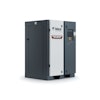


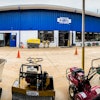

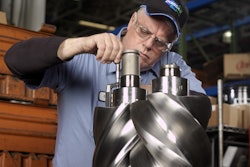
![[VIDeo] Doosan P185 Utility Compressor](https://img.forconstructionpros.com/files/base/acbm/fcp/image/2015/10/default.56154887ca522.png?auto=format%2Ccompress&fit=crop&h=167&q=70&w=250)


